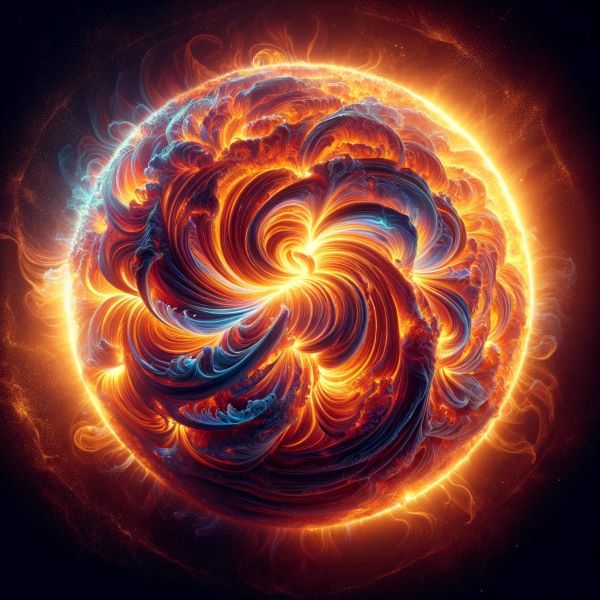How hot is the core of the Sun?
The core of the Sun is actually relatively small compared to the rest of it, as there are a lot of swirling gases that surround the core that still make up part of the Sun. We’ve actually been within a few million miles of the Sun without our spacecraft being burnt up into smithereens. The Parker Solar probe came within 4.3 million miles of its center (this is just one of many interesting facts about the Sun).
Of course, the Sun is crucial to our survival on the planet Earth too – we’re just close enough to it that it supplies us with heat, but fortunately not close enough that we have a burning temperature like Venus. The Sun is the hottest part of our solar system, and of the Sun, the core has the highest temperature. But just how hot can the core of the Sun get, and how does that compare to other stars in our universe? I’m going to run through this quickly now.
How hot is the core of the Sun?

The core of the Sun is on average 28,080,000°F, which is a little under 156,000,000°c, making it the hottest part of the Sun and indeed in our whole solar system. However, this is right at the core of the Sun, and in comparison, the surface and outer regions are much lower in temperature.
One of the main reasons why the Sun is so hot is down to its massive size – the Sun is so massive that it actually makes up more than 99% of the mass in our solar system, which shows just how small our planets are in comparison. And when the Sun formed, many different gases came together in what is known as “nuclear fusion”, which essentially is all of the atoms that make up these gases compressed together. These gases were compressed together with such pressure that it created the Sun’s high temperature.
Like the planets, the Sun also has an atmosphere that surrounds it, which means that it retains some of the heat that it creates too. This stops the Sun from eventually getting cooler, as the atmosphere stops the heat from completely escaping the planet. It also means that the closer to the Sun that you get, the hotter it becomes. As the Sun is made up of gases, there’s no solid surface to it, and the deeper you go beneath it to the core, the higher the temperature is.
Is the Sun the hottest place in the universe?
Because the Sun is so hit, many people wonder whether it may be the hottest place in the whole universe. And although yes, it does have an extremely high temperature, it’s definitely not the hottest place in the universe – far from it, in fact. We know that the Sun is actually unique in the fact that it has planets orbiting it with life on it, though it is still just one of hundreds of billions of stars in the universe.
And actually, in comparison to some of the other stars in our universe, the Sun isn’t actually that high in temperature. For example, one of the hottest stars in our universe is WR 102, which is a Wolf Rayet star; although we’re not exactly sure of its core temperature, it has a surface temperature of 210,000K, which is around 36x times the surface of our Sun, so the core is likely much hotter than our own. Also, it’s a common misconception that the biggest star is always the hottest though, as this isn’t necessarily the case.
The Wrap Up
So in conclusion, the core of the Sun is extremely hot, and in comparison with any of our planets, it doesn’t compare. The actual temperature of the Sun’s core can surprise some people, as if we compare it to the Sun’s surface (which has an average temperature of 5,505 °C), it’s dramatically hotter. But even then, if we look at other stars within our universe, there are many others that are much hotter than our own.





